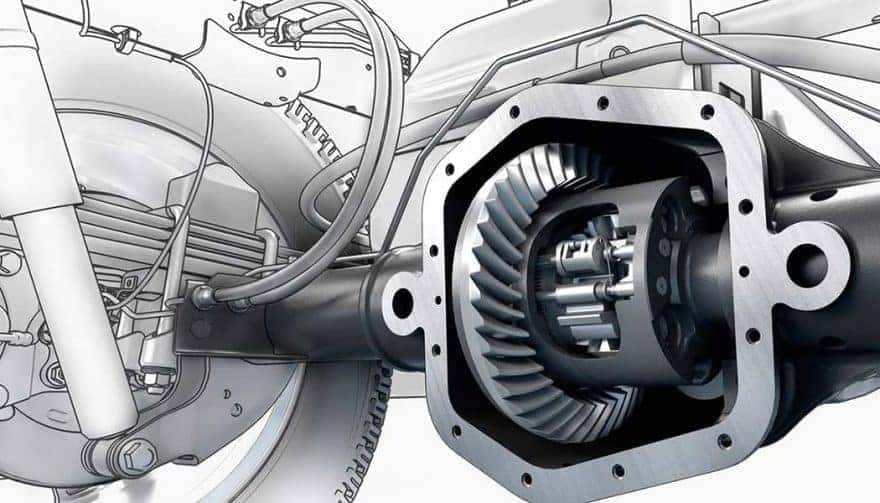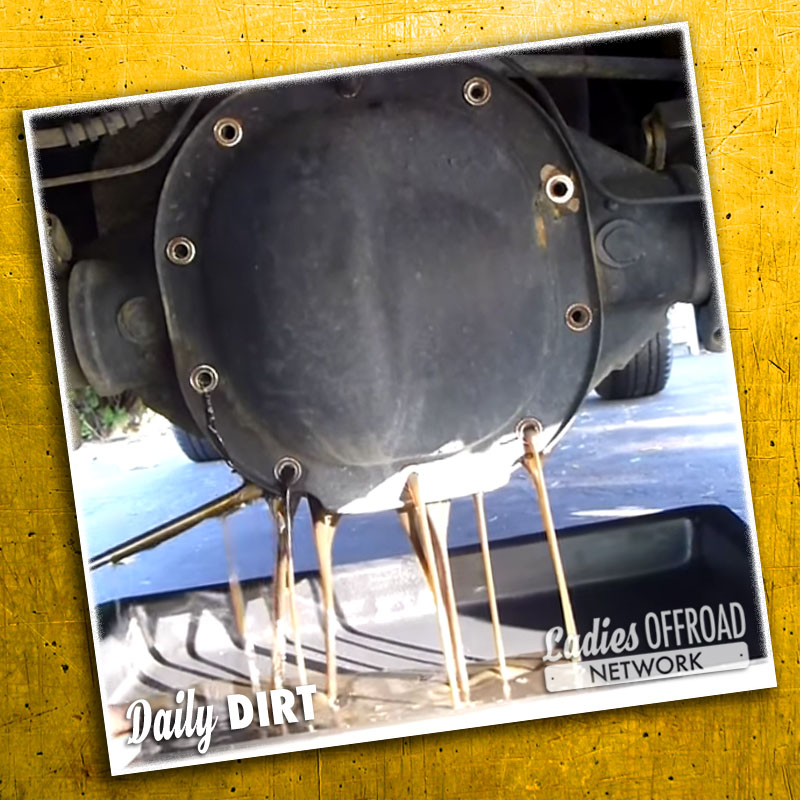Replacing differential fluid is essential for your vehicle’s longevity. It keeps your car running smoothly.
Differential fluid, also known as gear oil, lubricates the differential gears in your vehicle. These gears are crucial for turning your wheels at different speeds. Over time, this fluid can break down and lose its effectiveness. Replacing it periodically ensures the gears stay lubricated and prevents damage.
Neglecting this maintenance can lead to costly repairs. Whether you’re a car enthusiast or a regular driver, understanding how and when to replace differential fluid is important. This guide will walk you through the process, making it easy to keep your vehicle in top condition. So, let’s dive into the world of differential fluid and see how simple it can be to maintain your car’s health.
Importance Of Differential Fluid
The differential fluid in your vehicle plays a crucial role. It ensures the smooth operation of your car’s differential. This fluid lubricates the gears and helps maintain optimal performance. Without it, your vehicle’s differential could face serious issues.
Role In Vehicle Performance
Differential fluid is vital for your car’s performance. It reduces friction between gears. This helps in smooth and efficient movement. It also helps in heat dissipation. This is important during long drives or heavy loads. The fluid prevents wear and tear on the gears. This extends the life of your differential system.
Consequences Of Neglect
Neglecting differential fluid can lead to serious problems. The gears may grind together. This causes noise and damage. Your car’s performance could drop significantly. You might face issues like poor handling. Over time, the differential could fail completely. This can be expensive to fix.
Regularly changing the differential fluid is essential. It keeps your vehicle running smoothly. It also prevents costly repairs. Stay on top of your vehicle maintenance. Ensure the differential fluid is always in good condition.

Credit: www.keystonechevrolet.com
Signs You Need To Replace Differential Fluid
Knowing the signs that you need to replace differential fluid can save you from costly repairs. Ignoring these signs can lead to severe damage. Your vehicle’s differential fluid plays a crucial role. It keeps the gears in your differential lubricated and cool.
Unusual Noises
Are you hearing strange noises while driving? It could be a sign. A healthy differential fluid should keep everything running smoothly. Grinding or whining noises might indicate low or dirty fluid. These sounds come from gears not being properly lubricated.
Vibrations And Shuddering
Feel vibrations when you accelerate? This is another warning. Vibrations usually mean the differential fluid is old or contaminated. You might also feel shuddering or jerking. This happens because the gears are struggling without proper lubrication.
Choosing The Right Differential Fluid
Choosing the right differential fluid is crucial for your vehicle’s performance. The differential fluid, often overlooked, plays a vital role in your vehicle’s driveline. It ensures the smooth operation of the gears, reducing friction and heat. Without it, the differential components could wear out quickly, leading to costly repairs. So, how do you choose the right differential fluid? Let’s break it down.
Types Of Differential Fluids
There are several types of differential fluids available. Each serves a specific purpose. The three main types are conventional, synthetic, and limited-slip fluids.
Conventional differential fluid is the most common. It is suitable for standard driving conditions. It provides good lubrication but may need changing more often.
Synthetic differential fluid offers better performance. It lasts longer and performs well under extreme conditions. It is ideal for heavy-duty or high-performance vehicles.
Limited-slip differential fluid is for vehicles with limited-slip differentials. It contains special additives. These additives help prevent wheel slippage during sharp turns or slippery conditions.
Manufacturer Recommendations
Always follow the manufacturer’s recommendations for differential fluid. The owner’s manual is the best source of information. It specifies the type and grade of fluid needed for your vehicle.
Using the wrong fluid can harm your differential. It can lead to increased wear and reduced efficiency. Stick to the recommended fluid to ensure your vehicle runs smoothly.
If you are unsure about the correct fluid, consult a professional. They can provide guidance based on your vehicle’s make and model. Proper fluid selection ensures your differential functions at its best.
Tools And Materials Needed
Replacing differential fluid ensures your vehicle operates smoothly. Before starting, gather the necessary tools and materials. This will make the job easier and quicker.
Essential Tools
First, you need a socket wrench set. These tools will help you remove the drain and fill plugs. Next, get a fluid pump. This helps you transfer the new differential fluid into the differential case. A catch pan is also crucial. It catches the old fluid when you drain it. Lastly, have some rags or paper towels. These help clean any spills or drips.
Recommended Products
Choose high-quality differential fluid. Check your vehicle’s manual for the right type. Synthetic oils are often recommended. They offer better performance and protection. Also, consider using a gasket maker. This helps seal the differential cover after refilling. It prevents leaks and ensures a tight seal. Don’t forget gloves. They protect your hands from oils and chemicals.
Step-by-step Replacement Guide
Changing the differential fluid in your vehicle is crucial for maintaining smooth performance. Follow this step-by-step guide to replace the differential fluid efficiently. This process is simple and ensures the longevity of your car’s differential.
Draining Old Fluid
Begin by gathering the necessary tools: a drain pan, wrench, and new differential fluid. Locate the drain plug on the differential housing. Place the drain pan underneath the plug to catch the old fluid.
- Use the wrench to loosen and remove the drain plug.
- Let the old fluid drain completely into the pan.
- Check for metal shavings in the fluid, which could indicate wear.
- Once drained, clean the drain plug and replace it securely.
Refilling With New Fluid
After draining the old fluid, it is time to refill with new fluid. Make sure to use the recommended fluid for your vehicle.
- Locate the fill plug on the differential housing.
- Remove the fill plug using a wrench.
- Insert a fluid pump into the fill hole.
- Pump the new differential fluid into the housing.
- Continue until fluid starts to seep out of the fill hole.
Replace the fill plug securely and clean any spilled fluid. Your vehicle’s differential fluid is now replaced, ensuring better performance and longevity.

Credit: www.ladiesoffroadnetwork.com
Safety Precautions
Replacing differential fluid is important for maintaining a vehicle’s performance. But safety must always come first. Here are some key safety precautions to follow.
Protective Gear
Wearing the right protective gear can prevent injuries. Always wear safety goggles to protect your eyes from splashes. Use gloves to keep your hands safe from chemicals and sharp objects.
A long-sleeved shirt and pants can protect your skin. Sturdy, non-slip shoes are also essential. These items create a barrier between you and potential hazards.
Proper Lifting Techniques
Using proper lifting techniques is crucial to avoid injuries. First, ensure the vehicle is on a flat, stable surface. Use a car jack and jack stands to lift the vehicle.
Follow these steps for safe lifting:
- Place the car jack under the vehicle’s lifting point.
- Slowly lift the vehicle until it is high enough to place jack stands.
- Position jack stands under the vehicle and slowly lower the car onto them.
- Double-check the stability before working underneath.
Never rely solely on a car jack. Jack stands provide extra safety.
| Protective Gear | Proper Lifting Techniques |
|---|---|
| Safety Goggles | Use a flat, stable surface |
| Gloves | Utilize a car jack and jack stands |
| Long-sleeved shirt and pants | Lift vehicle slowly and securely |
| Non-slip shoes | Double-check stability |
By following these safety precautions, you can ensure a safe and efficient differential fluid replacement process.
Maintenance Schedule
Keeping your vehicle’s differential fluid in check is crucial for its longevity. Following a proper maintenance schedule ensures your car runs smoothly. Let’s explore the recommended schedules.
Manufacturer Guidelines
Each vehicle manufacturer provides specific guidelines for differential fluid replacement. These guidelines are tailored to the vehicle’s design and usage. Adhering to these recommendations keeps your warranty intact and maintains optimal performance.
Typically, manufacturers suggest changing the differential fluid every 30,000 to 60,000 miles. Refer to your owner’s manual for the exact interval. Here is a table summarizing common intervals:
| Vehicle Type | Recommended Interval (miles) |
|---|---|
| Passenger Cars | 30,000 – 50,000 |
| SUVs and Trucks | 40,000 – 60,000 |
Always use the fluid type specified by the manufacturer. This ensures compatibility and performance.
Custom Schedule Based On Usage
Your driving habits and conditions can affect how often you need to replace the differential fluid. If you frequently tow heavy loads, drive off-road, or in extreme conditions, you might need to change it more often.
Consider creating a custom schedule based on your usage. Here are some factors to consider:
- Heavy towing
- Off-road driving
- Frequent short trips
- Extreme temperatures
For such conditions, changing the fluid every 15,000 to 30,000 miles might be necessary. Regular checks help identify any issues early, ensuring your vehicle’s longevity.
By following both manufacturer guidelines and your custom schedule, you can ensure that your vehicle remains in top condition. This proactive approach helps avoid costly repairs and keeps your vehicle running smoothly.

Credit: www.youtube.com
Benefits Of Regular Replacement
Regular replacement of differential fluid offers several significant benefits for your vehicle. It is essential for maintaining the health and efficiency of your car’s differential system. Let’s explore how this simple maintenance task can have a positive impact on your vehicle’s lifespan and driving experience.
Extended Vehicle Lifespan
Replacing differential fluid at regular intervals helps to extend the lifespan of your vehicle. Clean fluid reduces friction and wear on the gears inside the differential. Over time, contaminated fluid can cause the gears to grind and wear out faster.
By keeping the fluid fresh, you ensure that the differential operates smoothly. This reduces the risk of costly repairs and premature part replacements. Consistent maintenance can also help preserve the overall value of your vehicle.
Improved Driving Experience
With regular differential fluid changes, you can enjoy an improved driving experience. Clean fluid ensures that the differential functions efficiently, which contributes to better handling and stability.
Drivers often notice smoother turns and a quieter ride after a fluid change. The differential plays a crucial role in distributing power to the wheels. Fresh fluid ensures this process happens seamlessly, enhancing your control over the vehicle.
Frequently Asked Questions
What Is Differential Fluid?
Differential fluid is a lubricant. It helps the differential gears move smoothly.
How Often Should You Replace Differential Fluid?
Replace differential fluid every 30,000 to 60,000 miles. Check your car’s manual for exact intervals.
What Happens If You Don’t Replace Differential Fluid?
Old differential fluid can cause gear wear. This can lead to noise, overheating, and potential damage.
How Do You Know When Differential Fluid Is Low?
Common signs include whining noises, vibrations, and poor handling. Check fluid levels regularly.
Can You Replace Differential Fluid Yourself?
Yes, you can. But it requires tools and knowledge. Many prefer a mechanic to do it.
Conclusion
Regularly replacing differential fluid ensures smooth car performance. This simple task extends your vehicle’s lifespan. Avoid costly repairs by maintaining your differential fluid. Follow the steps, and your car will thank you. Keep your car in top shape. Save money and drive safely.
Proper maintenance makes a big difference. Enjoy a smoother, quieter ride. Take care of your car today.

















